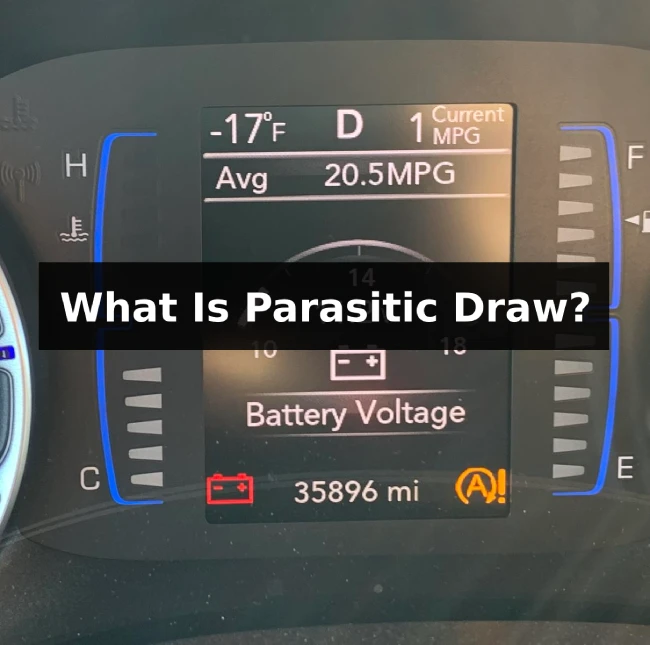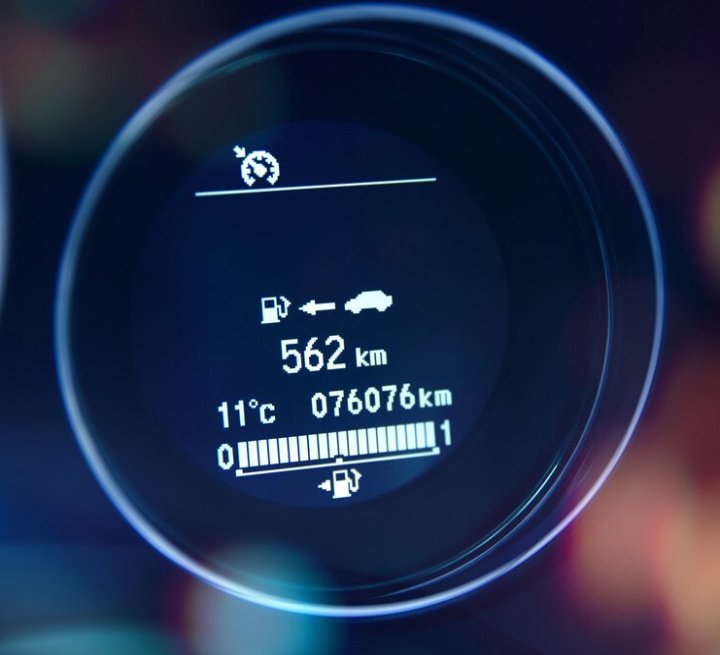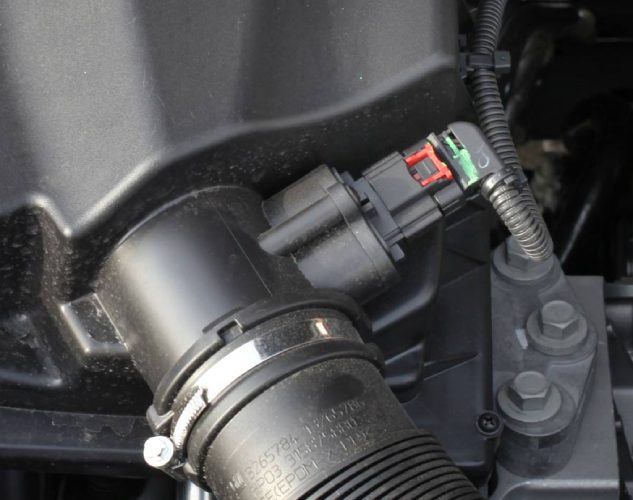So you walked out to your car, insert the key and turn on the ignition. But instead of your engine humming to life, you hear a “click” sound. If you have been driving for a while, then you know exactly what the clicking sound means, your battery is completely drained.
- What is Parasitic Draw (Drain) In A Car?
- How Do You Find a Parasitic Draw on a Car?
- What If Everything Seems Good?
- What Causes a Parasitic Draw in a Car Battery?
- Will Disconnecting the Battery Stop a Parasitic Draw?
- How Fast Will a Car Battery Drain from a Parasitic Draw?
- Can an Alternator Cause a Parasitic Draw?
- Conclusion
While this is common with batteries that have aged well, there is another reason why an otherwise healthy battery may be completely drained before morning. The phenomenon behind it is known as Parasitic Draw. So what is a parasitic draw, what causes it and how can you prevent it? That is what I will be talking about.
What is Parasitic Draw (Drain) In A Car?
Parasitic draw (aka parasitic drain) is when electrical components of a car draw power from the battery after the engine has been turned off. Modern vehicles are equipped with several onboard electronics that draw power from the battery. When the engine is turned off, the power supply is not entirely cut off from these devices, rather, it is reduced to a bare minimum.

Electrical components like the radio, alarm, clock, emission systems, and the onboard computer, etc continue to draw power from the battery and constitute what is known as a parasitic draw. For the most part, a parasitic draw is not considered harmful unless the amount of power being used exceeds a certain threshold (more on this later).
When that happens, the battery may be completely discharged resulting in the ominous clicking sound that means you need to bring out your jump-start cables. If you are having this experience, then there’s a component taking more power than usual when the vehicle is off, and here’s how to identify it.
Related content: Battery Discharge Increased In BMW: What Does It Mean?
How Do You Find a Parasitic Draw on a Car?
With more than 30 electrical components of which anyone could be a culprit, finding a parasitic draw can be cumbersome. But it doesn’t have to be, which is why I will be breaking the process down into steps to make it easy to follow.
01. Grab a multi-meter
The first step involves testing the battery to see how much current is drawn from it while the engine is off. To do this, you will need a multi-meter and a wrench. Using the wrench, disconnect the negative terminal of your car battery. Attach your multi-meter in a series connection with the battery. One end of the wire goes to the negative terminal of the battery and the other end of the wire goes to the battery cable.
Make sure you set your multi-meter to DC (direct current). Once connected, you should see values displayed in Amperes (A) or Milli-amperes (MA), depending on where you placed the multi-meter wires. The value displayed on the multi-meter screen represents the amount of current being drawn from the battery.
If this is beyond the acceptable limit, then it’s time to identify the problem.
02. Locate the fuse box
Leaving your multi-meter setup the way it is, locate the fuse box in your vehicle. Depending on the vehicle, there could be one or more fuse boxes. You need to check the manufacturer’s manual to know how many fuse boxes your car has and where they are located. Once you locate the fuse box, use a pin-nose plier and pull out the fuses one after the other.
As you pull out each fuse, check the multi-meter reading to see if there is any change in the current being drawn from the battery. This requires you to place the multi-meter at an angle from where you can easily see the display while working the fuses. To make it easier, you may need a second pair of eyes.
As you pull each fuse, ensure you place it back in the correct position. You will know when you have the right fuse as soon as you see a drop in the multi-meter reading. When you notice this, it is time to move to the next step.
03. Identify the source of the parasitic drain
Getting the right fuse is one half of the problem, you also need to know what device is associated with that fuse. This could be the radio, AC, alternator, etc. A quick and easy way to know which device is being controlled by the fuse is to turn on the car after the fuse has been removed. The device associated with the fuse will not function because its electrical circuit has been broken.
After identifying the source of the abnormal power draw, you can then disconnect the multi-meter and replace the battery terminals accordingly. Remember you have to keep the fuse out until the component has been replaced to avoid draining the battery. In some cases, you may find out that they are several components responsible for the parasitic draw.
If that happens, then you have to replace the components as soon as possible to avoid damaging your car battery.
Related content: Stop Vehicle Leave Engine Running – What Does It Mean?
What If Everything Seems Good?
Let’s assume you do not notice any abnormal battery drain in your car. If you should decide to connect the multi-meter as explained in the first step, you will immediately see a reading on the display. This tells you that although your car is functioning as it should, a small amount of current is still being drawn from the battery after the engine has been turned off.
However, this is well within the acceptable threshold, so there is no significant impact on the battery. The threshold beyond which the parasitic draw will be considered abnormal depends largely on the type of car but usually falls within 50 to 85 milliamps. Anything more than this is excessive and must be checked. To know the acceptable amount of parasitic draw for your car, divide the battery’s reserve capacity by 4.
The reserve capacity of a battery refers to the amount of time in minutes that a 12V battery can support a load before dropping to 10.5V. So if your car’s battery has a reserve capacity of 100 mins, then the acceptable parasitic draw is 100 divided by 4 which is 25 mA. Anything higher than this value is more than what’s acceptable.
What Causes a Parasitic Draw in a Car Battery?
Parasitic draw is always accounted for by manufacturers because it is essential to keep the many electronic components of a car working properly. Without it you will have to reset your car’s clock each time you start the car, your radio presets will have to be programmed, again and again, and your GPS, onboard computer, alarm, and many other features that work in the background will all be affected.
But for the most part, these devices do not cause any problematic drain. The real causes of abnormal battery drain are usually faulty components like a relay switch, an electrical short circuit, or electrical components such as the radio and headlights left running for a long time. Sometimes, the battery may be the cause of the problem.
A fully charged car battery holds about 12.6 volts. After a while, the capacity of the battery drops and it is no longer able to hold as much charge as it used to. This can cause the battery to drain easily even when there is no excessive parasitic draw.
Related content: Hazard Lights Blinking When Car Is Locked/Off – Possible Causes
Will Disconnecting the Battery Stop a Parasitic Draw?
Yes. By disconnecting the battery you sever the link between the source of the abnormal parasitic draw and the battery. This will prevent your battery from being drained. But this is not a permanent fix. You can’t keep disconnecting the battery every time you are parking your car for a long time. This will harm the electronic system of the car most especially the power-train control module (PCM).
The PCM stores data that makes the car run efficiently. This information is learned over time and is stored in the system’s Keep Alive Memory (KAM). Disconnecting the battery will reset the adaptive memory settings and that means the PCM has to go through the process of relearning the best way to efficiently run your car. Some of the data stored in the PCM are the fuel-air mixture, the transmission shift points, and other important control functions.
So disconnecting the battery often may have a long-term effect on the performance of your car.
How Fast Will a Car Battery Drain from a Parasitic Draw?
How fast the car battery drains will depend on the battery’s health as well as the amount of charge that is being drawn from the battery. Anything within the normal threshold of the parasitic draw will not drain the battery. But for an old battery with dead cells, even the normal discharge (referring to the usual parasitic draw) will drain the battery.
For an otherwise healthy car battery, an excessive parasitic draw could drain the battery in a matter of minutes. Take for instance our hypothetical battery with a reserve capacity of 100. That means the battery can support a load of 25 amperes for 100 minutes. A parasitic draw of 5 Amperes (way above the 85 mA threshold) will take about 500 minutes to drain the battery.
While a parasitic draw of 1 Amp (1000 milliamperes) will take about 2500 minutes (about 39 hours) to drain the battery. As you can see, the higher the value, the faster the battery is drained while a lower value will take much longer to drain the battery.
Related content: What Does Battery Discharge Warning Mean?
Can an Alternator Cause a Parasitic Draw?
Yes. Alternators have been known to cause a parasitic draw. This happens when one or more diodes within the alternator fails. Diodes are like gatekeepers, their duty is to ensure that electric current flows in only one direction. In this case, it is from the alternator to the battery. But when the diode is faulty, then the current can flow both ways. This means that when the engine is turned off current flows from the battery back to the alternator.
Conclusion
Parasitic draw is unavoidable but should be checked especially when it becomes excessive. The cost of not fixing the source of the problem is that your car battery will die faster than it’s supposed to. Solving the problem may be as easy as turning off the headlights or as difficult as replacing the alternator. Either way, you’re better off knowing that you don’t have to jump-start your car every morning.
Iliah is the co-founder of Mechanic Ask, where he writes detailed step-by-step tutorials for repairs and mods. He also posts videos walking through things like engine swaps, suspension lifts, and tuning chips. Iliah uses his blog as an educational resource for car enthusiasts based on the knowledge he’s gained from 15 years as an ASE-certified master technician. His repair manuals provide even novice readers the confidence to take on big projects.








